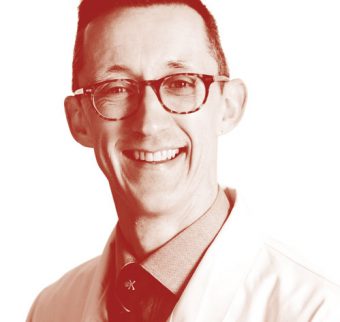Everybody else is doing it, so why can’t we?
[ Dr Paul O D’wyer, BDS MSc (Healthcare Mgmt) ]
What defines success in dentistry? From a clinical viewpoint, dentists would usually suggest successful treatments – particularly complex treatments – such as advanced crown and bridge, implant placement or surgical removal of a troublesome tooth. This is the yardstick by which we, as clinicians, judge ourselves. Our training and experience as clinicians lead us to this inescapable conclusion.
Dentists spend significant time and expense on increased training, adapting to new materials and perfecting new clinical techniques to improve these clinical outcomes.
But what defines success in dentistry from our patients’ viewpoint? Recent papers suggest that ease of access, a trusted clinician and reasonable fees are the key parameters for what patients view as success and quality care. (Tickle, M. and Campbell, S., 2013. How do we measure quality in primary dental care? British Dental Journal, 215(4), p.183.)
In trying to achieve success on all fronts, it is often the non-clinical aspects of our service that prove most challenging. As we are continually improving clinical performance in our surgeries – through clinical treatments – we must also focus on improvements in our patient experience. Quality improvement is different from quality assurance. The former is prospective and the latter is retrospective. From practice, we can usually clinically predict how a treatment will succeed. Think about that crumbling lower first molar, and the chances of fracture on extraction. Seasoned dentists will know that should we attempt it, then the possibility of a surgical extraction is high. We take action. We allot the sufficient time and equipment to the task. We have a considered discussion with our patient. This prepares us – and the patient – for a predictable outcome. This particular knowledge is learned through hard-fought experience chair-side. This is quality assurance in action. If we now apply this learning to the patient experience in our practice, it can be instructive to attract and maintain our patients. This is quality improvement.
Measurement is crucial to improvement. Just as we can predict clinically, from thousands of crumbling lower first molars, how the procedure will transpire, with IT in general practice in particular, we can easily summon up several reports on our working day. Many criteria can be viewed – from time spent clinically with each patient to the average time a patient spends in our waiting room. This type of review is as critical, I would argue, as the clinical success indicators mentioned above. Simply put, patients may never fully appreciate the time taken to train, provide, place and finish a composite restoration – but will always appreciate being seen in a timely manner. The opposite of the above is also true. How often have we “gone the extra mile” for a patient (who has been kept waiting) to be met with stony silence at the end of a long restorative visit?
The idea of combining the management of a practice with the clinical acumen of the practitioner is not new. However, its study (and improvement) is still relatively in its infancy. This is not to say that gilt-edged practice management alone will lead to success in dentistry – if there is absence of successful clinical outcomes! By the same logic, it is evident that a partnership or combination of management and clinical skills seems to lead to overall success in dentistry. It satisfies the crucial clinical success indicators that we have trained to provide, and the practice management indicators that we sometimes “strain” to provide!
In applying the SMART goals theory of Specific, Measurable, Achievable, Realistic and Timely, we can implement key improvements to our individual practices. A classic example here is the old chestnut of waiting time for patients. Delays in dentistry are inevitable – with chips, breaks and infections – particularly in the Summer months when patients are more likely to be outdoors. This aside, the routine appointment schedule can be adapted to absorb these delays. By applying the SMART goals theory, take a look at your last week of appointments. How long was the average wait for your patient? What caused these delays? Can we reduce these? Aside from my Group Clinical Advisor role with Dental Care Ireland, I am also Adjunct Faculty at the Institute of Leadership at the RCSI. In teaching Masters candidates at RCSI, we use the SMART goal theory to overcome challenges e.g. 80% of patients (Specific and Measurable) will be seen within 5-10 minutes of their appointment time (Achievable, Timely and Realistic). This example, can dramatically improve patient experience – and their view of your practice. As you implement changes, you can record them – and, like other organisations, demonstrate these goals. Goals that others may not even be measuring. Industry has shown such statistics to be a key driver in the choices patients/people make. In thinking about success in dentistry, I am reminded of those organisations – and of the title of a classic The Cranberries album – Everybody Else Is Doing It, So Why Can’t We?
Tags: Dental, Measurement, patients, practice

